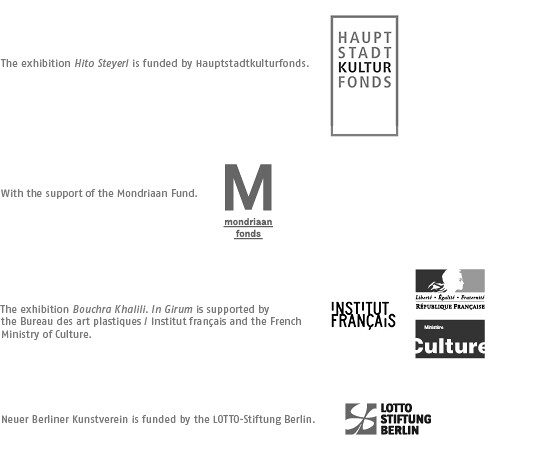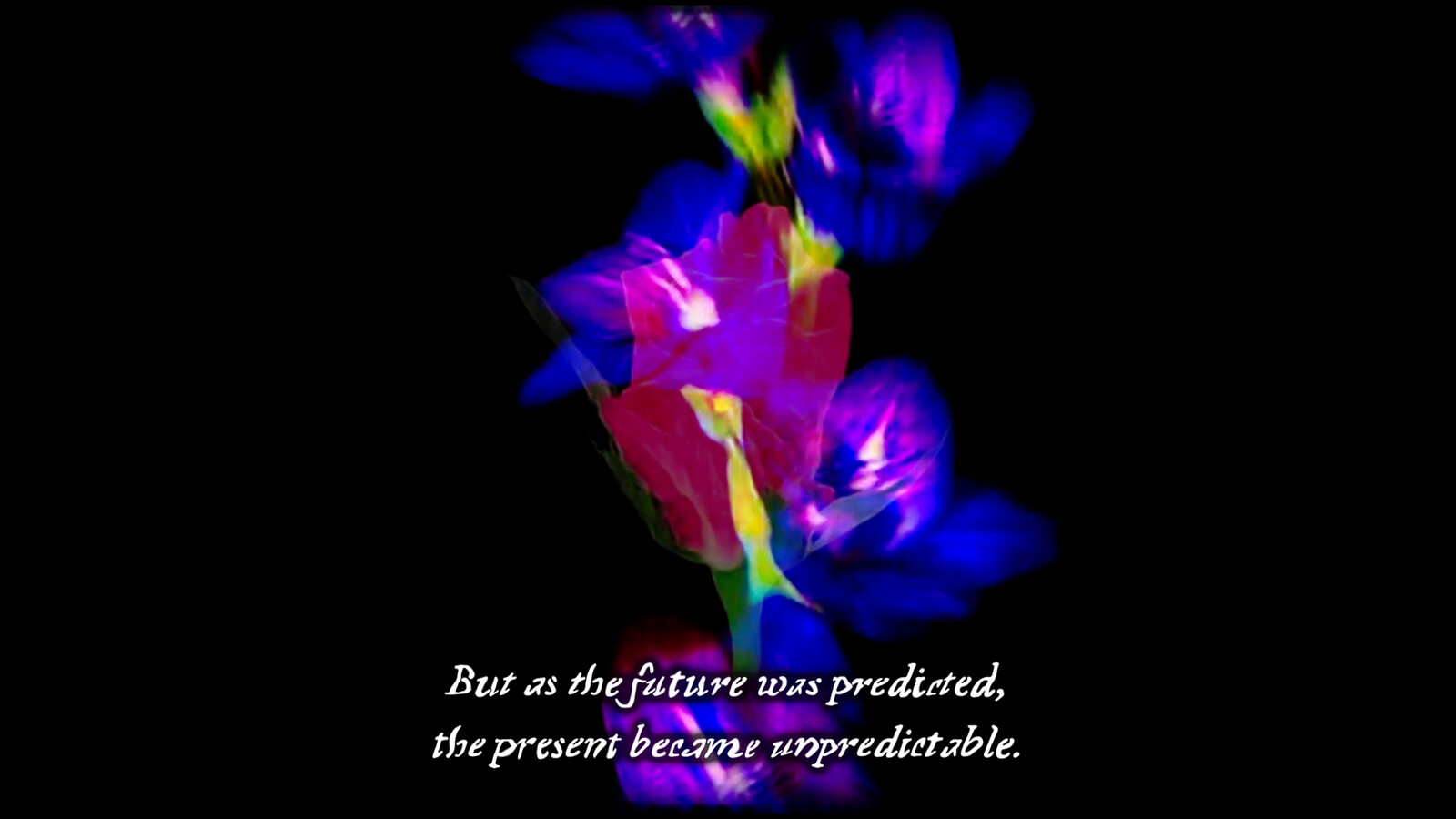November 23, 2019–January 26, 2020
Vertical Roll, Left Side Right Side, Double Lunar Dogs, Brooklyn Bridge
November 26, 2019–January 24, 2020
In Girum
November 23, 2019–August 31, 2020
Chausseestraße 128/129
10115 Berlin
Germany
Hours: Tuesday–Sunday 12am–6pm,
Thursday 12am–8pm
T +49 30 2807020
Hito Steyerl
November 23, 2019–January 26, 2020
Opening: November 22, 2019, 7pm
Curator: Marius Babias
Hito Steyerl, who artistically and socially reflects our world in times of hypercapitalism, digital lifestyles, globalization, and growing political crises, is one of the most influential artists of our time. In 2008, she presented her first solo exhibition in a German institution at Neuer Berliner Kunstverein (n.b.k.), which was followed by n.b.k.’s publication of the monographs Hito Steyerl (2010) and Hito Steyerl. Beyond Representation (2016).
In 2019, which marks the 50th anniversary of the founding of Neuer Berliner Kunstverein, n.b.k. is again dedicating a solo exhibition to Steyerl’s work, presenting the video installation This is the Future (2019) together with the largescale site-specific installation MISSION ACCOMPLISHED: BELANCIEGE. In cooperation with the artists Giorgi Gago Gagoshidze (*1983 in Kutaissi / Georgia) and Miloš Trakilović (*1989 in Tuzla, Bosnia and Herzegovina) Steyerl has developed a new lecture, in which her preoccupation with the conditions of capitalist production, consumer culture, and the mechanisms of commodification is continued. This is the Future is complemented by an augmented reality app, which is provided free of charge to visitors as a download.
Public program
Online presentation, Thursday, November 21, 2019, 7pm
MISSION ACCOMPLISHED: BELANCIEGE
Livestream of the lecture by Giorgi Gago Gagoshidze, Hito Steyerl, and Miloš Trakilović
Stream at www.nbk.org
Thursday, November 28, 2019, 7pm
Bild und Repräsentation im Werk von Hito Steyerl (Image and Representation in the Work of Hito Steyerl)
Panel discussion with Nora M. Alter (professor of Film and Media Art, Temple University, Philadelphia) and Klaus Theweleit (cultural theorist, Freiburg), moderated by Doreen Mende (curator and theorist, Harun Farocki Institute, Berlin / University of Art and Design, Geneva)
In German and English
Sunday, January 26, 2020, 8 pm
Kassem Mosse
Concert
Free admission to all events
n.b.k. Showroom
Joan Jonas. Vertical Roll, Left Side Right Side, Double Lunar Dogs, Brooklyn Bridge
November 26, 2019–January 24, 2020
Opening: November 22, 2019, 7 pm
Curator: Ute Meta Bauer
Joan Jonas (*1936 in New York, lives in New York) began experimenting with multimedia performance and video art in the late 1960s. Today she is regarded as one of the most influential pioneers of these art forms. The new medium of video enabled Jonas to adapt her explorations of sculpture, dance, and theater to a time-based format and to investigate aspects of performance art in unprecedented ways. Jonas combines archetypal and symbolic objects with gestural forms of expression, including mirrors and reflections, masks, and ritualized action. The artist uses these in her own body-based narrative formats, going beyond traditional forms of art and theater. The works presented in this exhibition, which are part of the n.b.k. Video-Forum collection—Left Side Right Side (1972), Vertical Roll (1972), Double Lunar Dogs (1982), Brooklyn Bridge (1988)—reveal her interest in literature, female subjectivity, semiotics, and media reflexivity.
n.b.k. Facade
Bouchra Khalili. In Girum
November 23, 2019–August 31, 2020
Opening: November 22, 2019, 7pm
Curator: Eva-Maria Gillich
With her work In Girum, designed for the facade of Neuer Berliner Kunstverein, Bouchra Khalili makes reference to the n.b.k. Video-Forum, the oldest and one of the largest video art collections in Germany. Khalili is particularly interested in the political and emancipatory potential of the medium. Since the introduction of the portable video camera in the 1960s, films can be produced autonomously and affordably. Using phosphorescent letters, Khalili quotes the title of a 35-mm film by Guy Debord from 1978: In girum imus nocte et consumimur igni; English: “We wander in circles at night and are consumed by fire.” With the film’s title, which goes back to a palindrome attributed to Virgil, Khalili refers to the political concept of the Situationist International masterminded by Debord, and his technique of dérive—an experimental exploration of the environment through aimless wandering. With this quote, Khalili encourages us to reflect on consumer society and capitalist alienation, while bringing interaction with the urban space into focus and alluding to the critical potential of the moving image.


